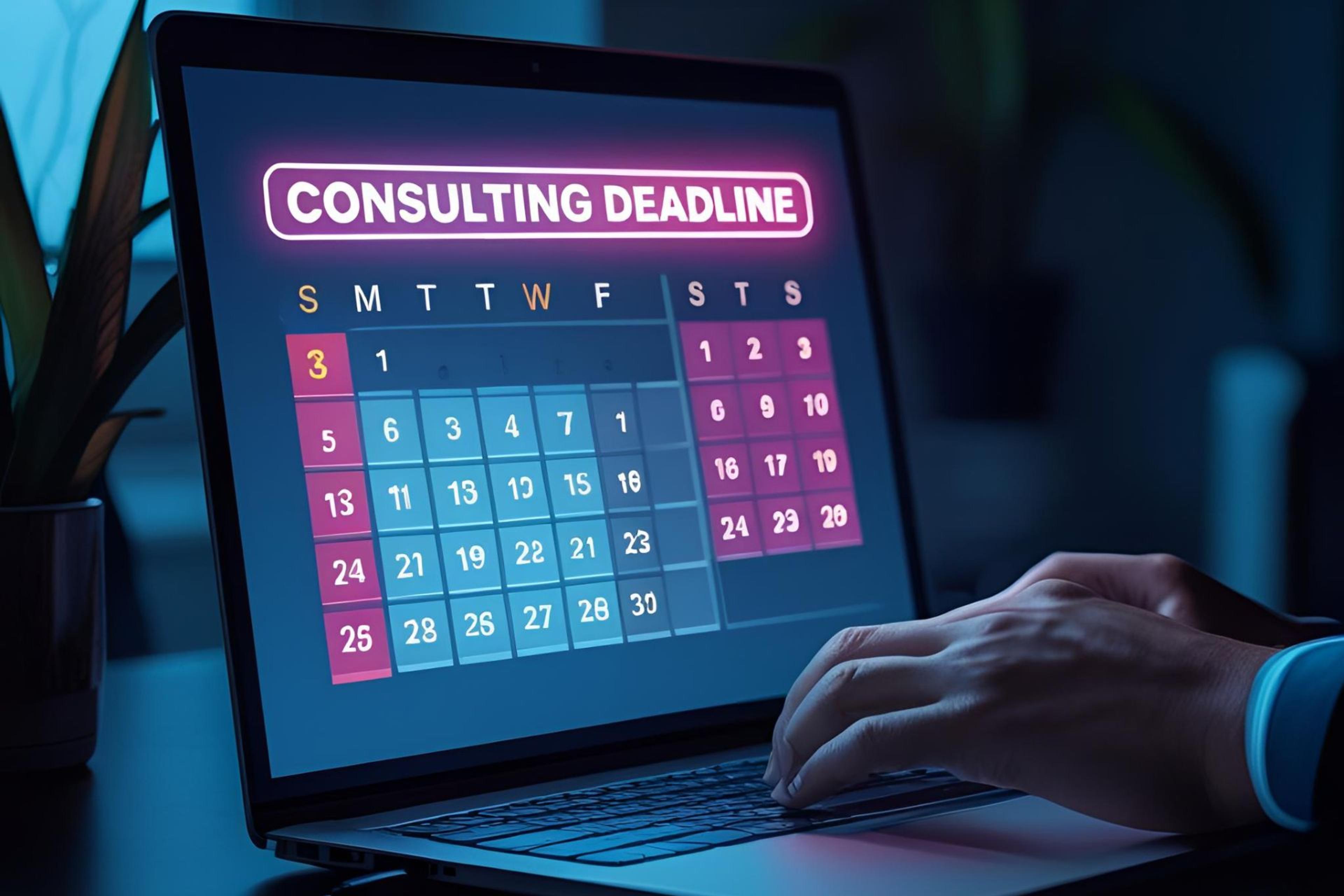McKinsey Cover Letter: Tips & Examples
Write a standout McKinsey cover letter with these expert tips and examples. Learn how to showcase your skills and impress recruiters.
Posted June 13, 2025

Join a free event
Learn from top coaches and industry experts in live, interactive sessions you can join for free.
Table of Contents
Are you dreaming of landing a coveted position at McKinsey & Company? Your McKinsey cover letter could be the key to unlock that door. This one-page document is your chance to make a lasting impression and showcase why you're the perfect fit for this prestigious consulting firm. But how do you craft a cover letter that stands out in a sea of talented applicants?
In this article, we'll walk you through the ins and outs of writing a compelling McKinsey cover letter. You'll learn about the firm's expectations, common mistakes to avoid, and tips to tailor your content for maximum impact. We'll also provide a practical format and a real-world example to help you create a consulting cover letter that catches the eye of McKinsey recruiters. So, let's dive in, start cranking that cover letter up, and boost your chances of securing that dream consulting role!
How to Craft a Compelling McKinsey Cover Letter
Crafting a compelling McKinsey cover letter can significantly boost your chances of landing an interview. While not always required, a well-written cover letter can help you stand out and make it easier for recruiters to get to know you better. Let's explore the key elements that make a McKinsey cover letter truly impactful.
Make a Perfect Opening
Your opening paragraph is crucial, as it's often the only part recruiters read thoroughly. To make a strong first impression:
- Start with a powerful statement summarizing your expertise and years of experience.
- Follow up with a sentence explaining why you're an excellent fit for the specific role.
- Use the correct job title, as consulting firms often have different titles for similar positions.
Remember, in these types of cover letters, your goal is to grab attention and introduce yourself memorably. A clear, concise, and attention-grabbing opening can make the difference between landing an interview and getting rejected, especially for borderline candidates.
Showcase Your Achievements/Results
In the body paragraphs, highlight your qualities and experiences that align with McKinsey's values:
- Personal impact
- Entrepreneurial drive
- Leadership skills
- Problem-solving skills
- Business skills
To make your McKinsey cover letter more skimmable, start each body paragraph with a bolded sentence summarizing its content. When describing your achievements:
- Quantify your accomplishments using numbers and percentages. For example, instead of saying you improved sales, mention that you increased sales by 20% over six months.
- Focus on stories that demonstrate problem-solving, leadership, entrepreneurial drive, and personal impact.
Demonstrate a Cultural Fit
To show you're a good fit for McKinsey's culture:
- Reflect your knowledge of the company and what distinguishes it from its peers. This demonstrates genuine interest, which is crucial as recruiting is expensive.
- Emphasize qualities and values that align with those of McKinsey. Narrating a story about these qualities can be even more effective than simply listing them.
- When discussing your motivation to join McKinsey, reference the company's vision and values. You can mention:
- Recent news highlighting McKinsey's commitment to its values
- A recent market or client insight reinforcing the relevance of McKinsey's vision
By following these guidelines, you'll craft a compelling McKinsey cover letter that showcases your unique background and increases your chances of moving past the initial screening stage.
Key Qualities to Highlight
To make a strong impression, focus on demonstrating these essential qualities:
- Problem-solving abilities: Showcase your analytical skills and ability to tackle complex issues.
- Leadership potential: Highlight experiences where you've led teams or projects successfully.
- Entrepreneurial spirit: Demonstrate your initiative and ability to drive change.
- Communication skills: Emphasize your ability to convey ideas clearly and persuasively.
- Alignment with McKinsey's values: Research the firm's core values and reflect on how they match your own.
Remember, McKinsey values diversity in experience and background. They recognize that these skills can be acquired in various ways, so don't hesitate to draw from different aspects of your life to illustrate these qualities.
Learn McKinsey's Expectations
When you're applying to McKinsey, it's crucial to understand what they're seeking in candidates. The firm holds four key company values: personal impact, entrepreneurial drive, inclusive leadership, and problem-solving skills. These traits are very important to McKinsey's culture and success, so you'll want to highlight them during your application process and interviews.
To prepare for the interview process, practice case studies, familiarize yourself with McKinsey's values, and prepare stories that demonstrate how you embody these qualities. This approach will help you present yourself as a well-rounded candidate who aligns with McKinsey's expectations and culture.
Read: A Comprehensive Guide to MBB: McKinsey & Co., Boston Consulting Group, and Bain & Co.
Common Cover Letter Mistakes To Avoid
When drafting your McKinsey cover letter, it's crucial to avoid common pitfalls that could hurt your chances of landing an interview. Here are five mistakes you should steer clear of:
1. Lengthy Cover Letter
Lengthy cover letters can be a major turn-off for recruiters who sift through hundreds or thousands of applications daily. Aim for conciseness and clarity, ensuring every sentence adds value. Your McKinsey cover letter should be no longer than one page, with a font size no smaller than 11 and 1-inch margins all around.
2. Wrong Format
Poor formatting can distract from your key points and make your cover letter difficult to read. Use a clean, professional layout with consistent fonts, spacing, and margins. Break up text into short paragraphs or bullet points to enhance readability. Stick to the McKinsey cover letter format: one page, left-aligned, with 1.15 line spacing and an empty line between sections and paragraphs.
3. Generic Cover Letter
Avoid using vague phrases or generic statements that could apply to any consulting firm. Tailor your cover letter to McKinsey by referencing specific aspects of the firm that appeal to you. Don't copy and paste from other applications or use templates without serious customization. Show that you've done your research and are genuinely excited about the opportunity to join McKinsey.
4. Not Including Quantifiable Results
Quantifying your achievements helps to illustrate the impact you've made in your work experiences and extracurricular activities. Use numbers and percentages to showcase your successes. For example, instead of saying you improved sales, mention that you increased sales by 20% over six months. Quantifiable results provide concrete evidence of your abilities and make your accomplishments more compelling to the reader.
5. Lack of Proofreading
Typos and grammatical errors can significantly hurt your credibility. Proofread your cover letter multiple times and consider asking someone else to review it as well. A cover letter free of errors demonstrates your attention to detail and your commitment to presenting yourself professionally. Remember, people have been rejected for simple mistakes like closing a McKinsey cover letter with "and this is why I want to work at Bain".
Tailor Your Content for Maximum Impact
To make your McKinsey cover letter stand out, you need to tailor your content strategically. This involves highlighting your achievements, addressing potential concerns, and emphasizing relevant skills. Let's explore how to do this effectively.
Quantifying Your Accomplishments
When describing your achievements, use specific numbers and percentages to demonstrate your impact. For example, instead of simply stating that you improved sales, mention that you "increased sales by 20% over four months". This approach clearly shows the results of your actions and provides concrete evidence of your abilities.
To further illustrate your accomplishments:
- Use action verbs to describe your contributions.
- Focus on outcomes rather than just responsibilities.
- Provide context to help the reader understand the significance of your achievements.
For instance, you could say: "Improved university enrollments by 7% by leading a team of 6 to analyze feedback and questions from previous events and running workshops specifically targeted to address them".
Addressing Potential Red Flags
Your McKinsey cover letter is an opportunity to address any potential concerns that may arise from your resume. Some common issues you might need to explain include:
- Gaps in your work history
- Career changes
- Short job tenures
- Overqualification or under qualification
When addressing these issues, be honest and provide context. For example, if you have a gap in your work history due to health issues or family responsibilities, briefly explain the situation and highlight any relevant skills or experiences you gained during that time.
Emphasizing Relevant Skills
McKinsey values specific qualities in candidates, including problem-solving abilities, leadership potential, and strong interpersonal skills. To demonstrate these skills:
- Highlight experiences that showcase your analytical and problem-solving capabilities.
- Provide examples of your leadership and teamwork skills.
- Emphasize your proficiency in Excel analysis and PowerPoint presentations.
Remember to tailor your skills to the specific requirements of the consulting role. For instance, you could mention your ability to analyze large datasets, identify trends, and communicate findings effectively through graphical presentations.
By following these guidelines, you'll create a compelling McKinsey cover letter that showcases your unique value proposition and increases your chances of securing an interview with McKinsey.
5 Cover Letter Tips to Keep in Mind
- Quantify the value you can bring to the company: When crafting your McKinsey cover letter, focus on demonstrating your value through concrete examples. Use numbers and percentages to showcase your achievements. For instance, instead of simply stating you improved sales, mention that you "increased sales by 20% over six months". This approach provides tangible evidence of your abilities and makes your accomplishments more compelling to the reader, ultimately proving that you have what it takes to be a successful consultant.
- Always tailor your letter: Customizing your McKinsey cover letter is crucial. Research the firm's values, recent projects, and unique aspects of its culture. Mention specific McKinsey initiatives that align with your professional interests and goals. A good test is to replace all instances of "McKinsey" in your letter with a different consulting firm name. If it still makes sense, your letter likely needs more tailoring.
- Communicate your ideas as clearly and concisely: Keep your cover letter short and punchy to capture and retain the recruiter's attention. Aim for a one-page letter, focusing on the most relevant and impactful information. Use clear, direct language and avoid unnecessary jargon or overly complex sentences. This approach ensures your key points are communicated effectively and leave a strong impression.
- Emphasize why the job is right for you: In your cover letter, demonstrate certainty that this job is the right fit for you. Use phrases like "You have a high-demand position" or "This role is very much my style". This approach is about selling yourself to the employer, showing why they should interview you before anyone else.
- Follow McKinsey's cover letter format: Adhere to McKinsey's preferred format: Keep the length to one page, use the same font and style as your resume (e.g., Calibri, Times New Roman, Arial), align left, use 1.15 line spacing, and leave an empty line between sections and paragraphs. Maintain at least a 1-inch margin on every side. Remember, the McKinsey cover letter should be formal, avoiding informal language.
By incorporating these strategies, you can create a consulting cover letter that aligns with the company’s values, showcases your achievements, and leaves a strong impression during the hiring process.
McKinsey Cover Letter Format
When crafting your McKinsey cover letter, it's crucial to adhere to the firm's preferred format. This attention to detail demonstrates your professionalism and ability to follow instructions. Here's what you need to keep in mind:
- Length and Layout: Your McKinsey cover letter should be concise and impactful, limited to one page only. This constraint challenges you to synthesize your experiences and qualifications effectively, mirroring the skill of summarizing lengthy consulting engagements into brief reports.
- Font and Styling: Choose a standard, professional font such as Times New Roman, Arial, or Calibri. Ensure the font size is legible, typically size 10 or larger. This formatting choice reflects the clarity and professionalism expected in consulting work.
- File Format: Always save and submit your cover letter as a PDF file. This format preserves your layout and formatting across different devices and operating systems, ensuring that your document appears exactly as intended.
- Content Structure: While there's no one-size-fits-all approach, consider organizing your content around McKinsey's core values. Some candidates find success in using subheadings that align with these values, crafting a brief "story" for each to illustrate their fit with the company culture.
Remember, your cover letter is not just about conveying information—it's a demonstration of your ability to communicate clearly and concisely, a skill highly valued in consulting.
If you’re just starting out on formatting and writing your cover letter, you may feel a bit stressed out and worried about where to start. To help you ease into this process, we’ve put together a full guide to writing the perfect cover letter, complete with multiple cover letter format settings, a sample cover letter for multiple industries, and in-depth descriptions and advice for every inch of your letter. Fill out the form below to get it sent directly to your inbox!
[General Cover Letter Guide Lead-Gen Resource]
McKinsey Cover Letter Examples
While our PDF guide on how to write a cover letter is a great start, we want to ensure your McKinsey application stands out, which is why we’ve provided some sample McKinsey cover letters below for you to review and get inspired by.
McKinsey Cover Letter Sample #1:
[Your Name]
[Your Address Line 1]
[Your Address Line 2]
[Your Phone Number]
[Your Email Address]
[Date]
McKinsey & Company
Re: [Position Title] in [City] Office
Dear Hiring Manager,
I am writing to apply for the Associate position at McKinsey & Company in Silicon Valley. My unique skill set can help your clients tackle their toughest challenges. My Ph.D. at Stanford, focused on connecting strategy with inter-organizational relationships, has given me a deep understanding of key business trends like globalization, streamlining operations, and outsourcing non-core activities. I believe this specialized knowledge will be a valuable asset to McKinsey’s practice teams.
During my doctorate, I published four articles in the Academy of Management Annals focused on strategic planning and supply chain management, which would be a great fit for your strategic planning team. During a summer internship with Bain, I developed a creative solution for a client’s corporate travel expenses, streamlining their processes into a single online platform. This change led to over $1M in annual savings and cut 50 hours of work each week. McKinsey's clients expect measurable results, and I am eager to deliver similar value as an Associate.
In my most recent role as an intern at BCG, I spearheaded a project that analyzed customer behavior data to recommend strategies for reducing churn. The recommendations led to a 10% improvement in retention within three months. Additionally, as part of a consulting project, I led a team that developed a strategic plan to enhance operational efficiency, resulting in a 20% reduction in costs for our client. These experiences have honed my ability to dissect complex problems, develop actionable insights, and lead teams toward successful outcomes.
Becoming a McKinsey Associate would be a significant milestone for me. Throughout my academic and professional journey, I’ve honed strong analytical and problem-solving skills, along with the ability to collaborate effectively in teams — key qualities that McKinsey values. This role aligns perfectly with my data-driven approach and dedication to teamwork.
Thank you for considering my application. I am enthusiastic about the prospect of contributing to McKinsey’s legacy of excellence and look forward to the opportunity to discuss how my skills and experiences align with your needs.
Best regards,
[Your Name]
McKinsey Cover Letter Sample #2:
[Your Name]
[Your Address Line 1]
[Your Address Line 2]
[Your Phone Number]
[Your Email Address]
[Date]
McKinsey & Company
Re: [Position Title] in [City] Office
Dear Hiring Manager,
I am a senior majoring in [Your Major] at [Your College], and I am excited to apply for the [Position Title] at the [City] office. With a strong background in [specific skill or experience], a passion for strategic thinking, and a track record of driving impactful results, I am confident in my ability to contribute effectively to McKinsey’s teams and clients.
My interest in McKinsey was solidified after attending the firm’s [event/workshop] and speaking with [Consultant’s Name] and [Consultant’s Name], who provided valuable insights into McKinsey’s approach to problem-solving and client engagement. What stands out to me is McKinsey’s emphasis on innovative thinking, collaborative culture, and commitment to driving transformative change. The opportunity to work on high-impact projects while learning from some of the brightest minds in the industry is what draws me to the firm.
During my internship at [Company Name], I worked on a project that involved analyzing market trends and developing recommendations for a product launch. My contributions helped the company achieve a 15% increase in market share within six months. In another role as a [Position] at [Organization Name], I led a team that streamlined operations, resulting in a 25% reduction in process time. These experiences have equipped me with the ability to approach complex challenges with a strategic mindset and deliver tangible results.
Working as a McKinsey Associate is a key goal for me. My academic background and work experience have centered on building strong analytical and problem-solving skills, along with the ability to work effectively in teams, essential qualities for McKinsey. This role aligns perfectly with my data-driven approach and commitment to teamwork.
I am enthusiastic about the opportunity to join McKinsey and contribute to its mission of driving impact for clients. Thank you for considering my application. I look forward to the possibility of discussing how my background, skills, and experiences align with McKinsey’s needs.
Sincerely,
[Your Name]
Conclusion
Sending in a strong McKinsey cover letter can be one of the most influential moves in your quest to land your dream consulting role. By focusing on key elements like a strong opening, showcasing your achievements, and demonstrating cultural fit, you’ll be able to make a lasting impression on recruiters. Remember to keep your letter concise, tailored specifically to McKinsey, and free of common mistakes. This approach will help you stand out in a competitive applicant pool.
Ultimately, your cover letter is a chance to show off your unique value and align yourself with McKinsey's expectations. By highlighting your problem-solving skills, leadership potential, and entrepreneurial spirit, you'll paint a picture of a candidate who's ready to thrive in the fast-paced world of consulting. With these tips and examples in mind, you're now equipped to create a cover letter that opens doors to exciting opportunities at McKinsey & Company.
If you want a second set of eyes on your McKinsey cover letter or guidance tailoring it to your unique story, consider working with a Leland coach. Many of them are former McKinsey consultants who’ve helped candidates land offers. Browse top management consulting coaches.
FAQs
How can I craft an effective cover letter for McKinsey?
- To create a compelling McKinsey cover letter, it's crucial to know your personal story well and identify the top three to five key points you want to highlight. Make sure to connect your narrative to your desire to pursue a career in consulting, specifically at McKinsey. Use quantitative and specific examples to substantiate your claims and demonstrate your suitability for the role.
How long should a McKinsey cover letter be?
- A McKinsey cover letter should be concise, ideally no longer than one page. Aim to keep it between 300 to 400 words, focusing on your most relevant experiences and qualifications.
Can I use the same cover letter for different McKinsey offices?
- It's best to tailor your cover letter for each office if you are applying to multiple locations. Highlight why you are interested in a particular office and any connections you have to the region.
Should I address my McKinsey cover letter to a specific person?
- Whenever possible, address your cover letter to a specific person, such as the hiring manager or the recruitment team. If you cannot find a name, "Dear Hiring Committee" or "Dear McKinsey Recruitment Team" is acceptable.
How can I make my McKinsey cover letter stand out?
- To make your McKinsey cover letter stand out, highlight specific achievements that demonstrate your problem-solving skills, leadership experience, and ability to work in a team. Tailor your examples to align with McKinsey's values and the consulting role.
Should I mention my GPA in my McKinsey cover letter?
- If your GPA is strong (generally above 3.5), it's appropriate to mention it in your cover letter. However, if it's lower, you might choose to focus more on your professional experience and achievements instead.
Read these next:
Browse hundreds of expert coaches
Leland coaches have helped thousands of people achieve their goals. A dedicated mentor can make all the difference.

























